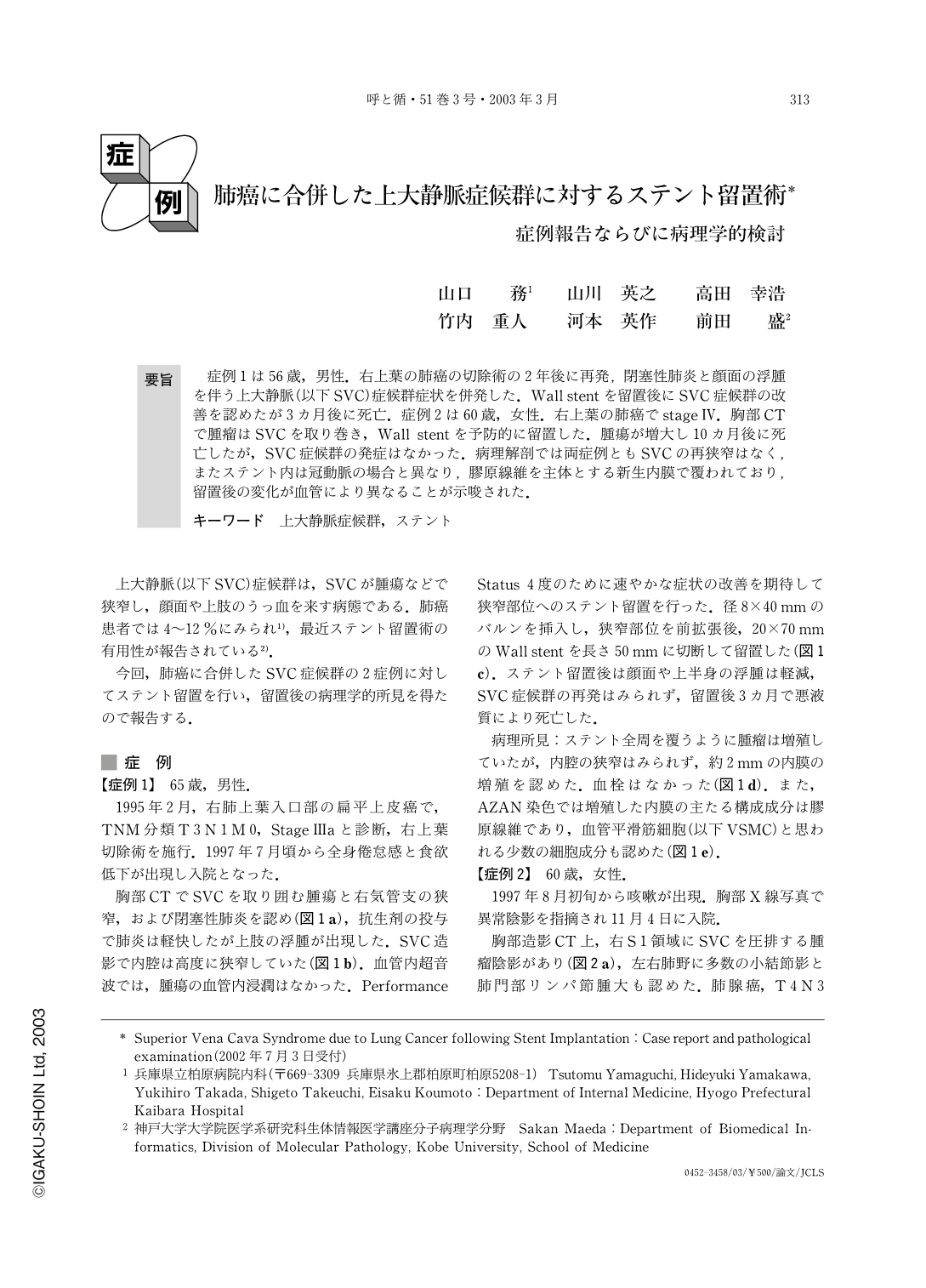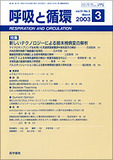Japanese
English
- 有料閲覧
- Abstract 文献概要
- 1ページ目 Look Inside
要旨 症例1は56歳,男性.右上葉の肺癌の切除術の2年後に再発, 閉塞性肺炎と顔面の浮腫を伴う上大静脈(以下SVC)症候群症状を併発した.Wall stentを留置後にSVC症候群の改善を認めたが3カ月後に死亡.症例2は60歳,女性.右上葉の肺癌でstageⅣ.胸部CTで腫瘤はSVCを取り巻き,Wall stentを予防的に留置した.腫瘍が増大し10カ月後に死亡したが,SVC症候群の発症はなかった.病理解剖では両症例ともSVCの再狭窄はなく,またステント内は冠動脈の場合と異なり, 膠原線維を主体とする新生内膜で覆われており, 留置後の変化が血管により異なることが示唆された.
Summary
Case 1 is that of a 56-year-old man. He suffered from lung cancer in the right upper lobe and underwent lobectomy. After 2 years, he was admitted to our hospital for obstructive pneumonia and superior vena cava(SVC) syndrome with facial edema caused by cancer relapse. Implantation of a Wall stent reduced facial edema, but the patient died after 3 months without SVC syndrome. Case 2 is that of a 60-year-old woman with advanced lung cancer. CT scan revealed a large mass encircled by SVC. Wall stent implantation was undertaken to prevent SVC syndrome. The patient survived for 10 months without suffering from SVC syndrome. In both cases, histological observation showed the thin neointimal formation at the stent strut sites and in-stent restenosis was not found. Unlike coronary artery angioplasty, the neointima consisted predominantly of collagen fiber. This finding suggests that the vessel wall reaction after implantation of a stent differs according to the blood vessel type.

Copyright © 2003, Igaku-Shoin Ltd. All rights reserved.


